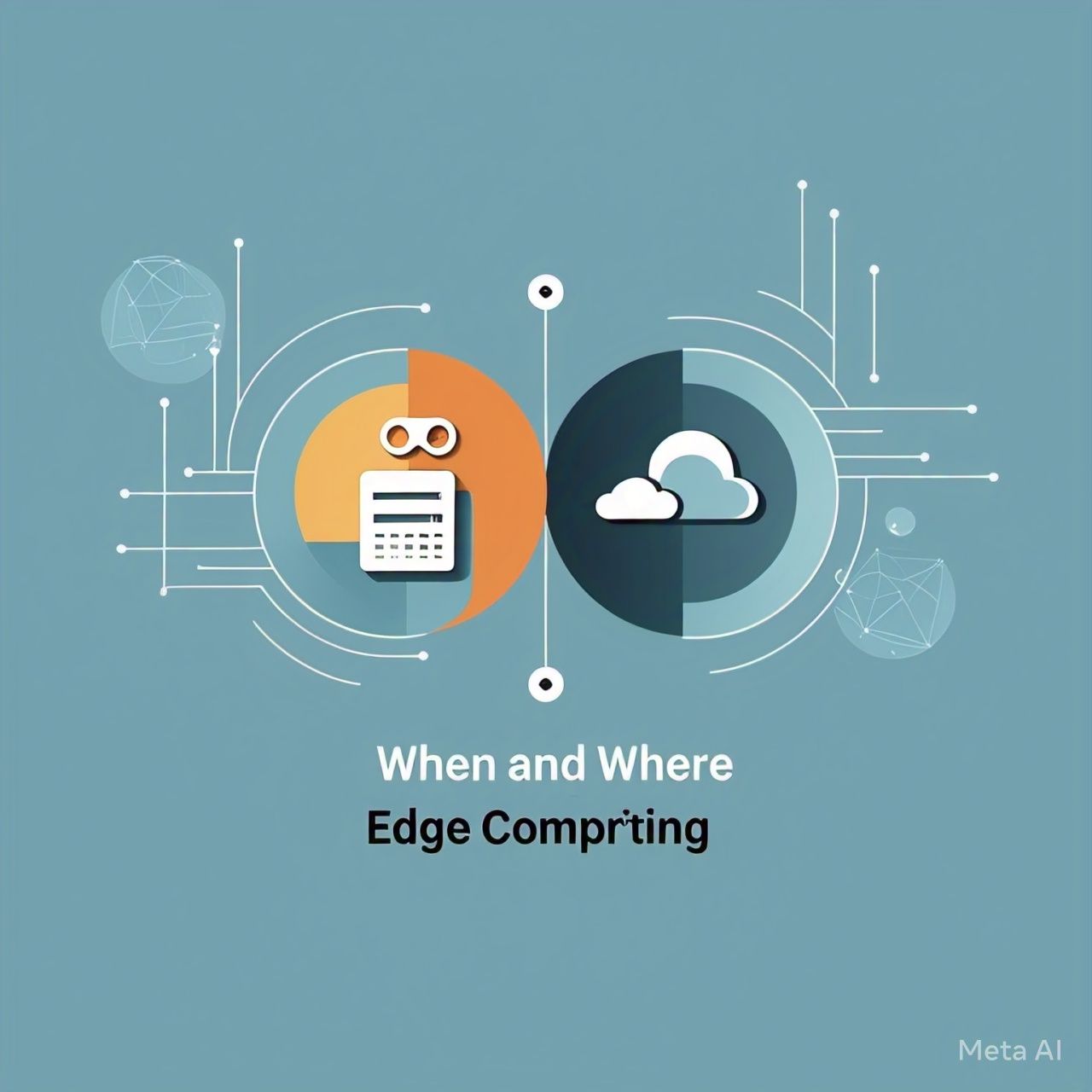Table of Contents
- Introduction
- Understanding Cloud Computing and Edge Computing
- What is Cloud Computing?
- What is Edge Computing?
- Key Differences Between Cloud and Edge Computing
- Advantages and Limitations
- Benefits of Cloud Computing
- Challenges of Cloud Computing
- Benefits of Edge Computing
- Challenges of Edge Computing
- When to Use Cloud Computing
- Scenarios Where Cloud Computing Excels
- Industries Benefiting from Cloud Computing
- When to Use Edge Computing
- Scenarios Where Edge Computing is Superior
- Industries Benefiting from Edge Computing
- Cloud vs. Edge Computing: A Comparative Table
- The Future of Cloud and Edge Computing
- AI and IoT Integration
- Hybrid Solutions
- Security and Privacy Enhancements
- Conclusion
- FAQs
Introduction
As businesses and organizations increasingly rely on digital infrastructure, the debate between edge computing and cloud computing has gained prominence. While cloud computing offers centralized data storage and processing power, edge computing brings computational resources closer to the data source. This article explores the differences, benefits, and use cases of both technologies.
Understanding Cloud Computing and Edge Computing
What is Cloud Computing?
Cloud computing provides on-demand computing services, including storage, processing power, and software, over the internet. It eliminates the need for local infrastructure and enables businesses to scale resources dynamically.
What is Edge Computing?
Edge computing processes data closer to the source, reducing latency and bandwidth usage. It is ideal for real-time applications that require immediate data processing without relying on centralized cloud data centers.
Key Differences Between Cloud and Edge Computing
| Feature | Cloud Computing | Edge Computing |
|---|---|---|
| Processing Location | Centralized data centers | Near the data source |
| Latency | Higher latency | Low latency |
| Bandwidth Usage | High | Reduced |
| Security | Relies on centralized security measures | Requires localized security protocols |
| Ideal Use Cases | Big data analytics, storage-intensive applications | Real-time processing, IoT applications |
Advantages and Limitations
Benefits of Cloud Computing
- Scalability: Easily expands resources based on demand.
- Cost-Effectiveness: Reduces the need for physical infrastructure.
- Remote Access: Enables global accessibility.
- Data Redundancy: Ensures backup and disaster recovery solutions.
Challenges of Cloud Computing
- Latency Issues: High latency for real-time applications.
- Bandwidth Costs: Increased costs for data transmission.
- Security Risks: Centralized systems can become targets for cyber threats.
Benefits of Edge Computing
- Reduced Latency: Enables real-time data processing.
- Lower Bandwidth Usage: Reduces data transfer costs.
- Improved Reliability: Works independently of internet connectivity.
- Enhanced Privacy: Keeps sensitive data closer to the source.
Challenges of Edge Computing
- Limited Scalability: Hardware constraints at the edge.
- Security Complexity: Decentralized security management.
- Higher Maintenance Costs: Requires regular updates and monitoring.
When to Use Cloud Computing
Scenarios Where Cloud Computing Excels
- Big Data Analytics: Cloud computing efficiently processes and analyzes massive datasets.
- Enterprise Applications: Business software, such as CRM and ERP, benefits from cloud scalability.
- Remote Work and Collaboration: Cloud solutions enable seamless remote collaboration and data sharing.
- Disaster Recovery: Cloud storage ensures business continuity and data backup.
Industries Benefiting from Cloud Computing
| Industry | Cloud Computing Use Cases |
| Healthcare | Cloud-based electronic health records (EHR) |
| Finance | Secure online banking and transaction processing |
| Retail | E-commerce platforms and customer insights |
| Education | Online learning platforms and digital resources |
When to Use Edge Computing
Scenarios Where Edge Computing is Superior
- IoT and Smart Devices: Edge computing enables real-time processing for IoT devices.
- Autonomous Vehicles: Self-driving cars require ultra-low latency decision-making.
- Manufacturing and Industrial Automation: Reduces downtime and enhances operational efficiency.
- Remote and Rural Areas: Edge computing allows data processing in locations with poor connectivity.
Industries Benefiting from Edge Computing
| Industry | Edge Computing Use Cases |
| Healthcare | Real-time patient monitoring and diagnostics |
| Transportation | Traffic management and smart navigation systems |
| Manufacturing | Industrial IoT for predictive maintenance |
| Energy | Smart grid management and optimization |
Cloud vs. Edge Computing: A Comparative Table
| Feature | Cloud Computing | Edge Computing |
| Processing Location | Centralized data centers | Near the data source |
| Latency | Higher latency | Low latency |
| Bandwidth Usage | High | Reduced |
| Security | Relies on centralized security measures | Requires localized security protocols |
| Ideal Use Cases | Big data analytics, storage-intensive applications | Real-time processing, IoT applications |
The Future of Cloud and Edge Computing
AI and IoT Integration
The fusion of AI with both cloud and edge computing will drive automation and enhance decision-making processes.
Hybrid Solutions
Hybrid cloud-edge models will emerge, enabling businesses to leverage the best of both worlds for optimized performance.
Security and Privacy Enhancements
Advanced encryption methods and decentralized security architectures will strengthen the protection of cloud and edge networks.
Conclusion
Cloud computing and edge computing serve distinct yet complementary purposes in modern technology landscapes. While cloud computing excels in scalability and centralized processing, edge computing provides real-time processing capabilities essential for latency-sensitive applications. The choice between the two depends on specific use cases, industry requirements, and technological advancements.
FAQs
1. What is the primary difference between cloud and edge computing?
Cloud computing centralizes data processing in remote servers, while edge computing processes data closer to the source, reducing latency.
2. When should a business opt for cloud computing?
Businesses requiring large-scale data storage, remote accessibility, and cost-effective scalability should choose cloud computing.
3. What are the best use cases for edge computing?
Edge computing is ideal for IoT applications, autonomous vehicles, industrial automation, and scenarios requiring real-time data processing.
4. Can cloud and edge computing work together?
Yes, hybrid models combine cloud and edge computing to optimize performance, security, and efficiency.
5. How does edge computing improve IoT performance?
Edge computing processes IoT data locally, reducing latency, bandwidth usage, and reliance on cloud servers.




